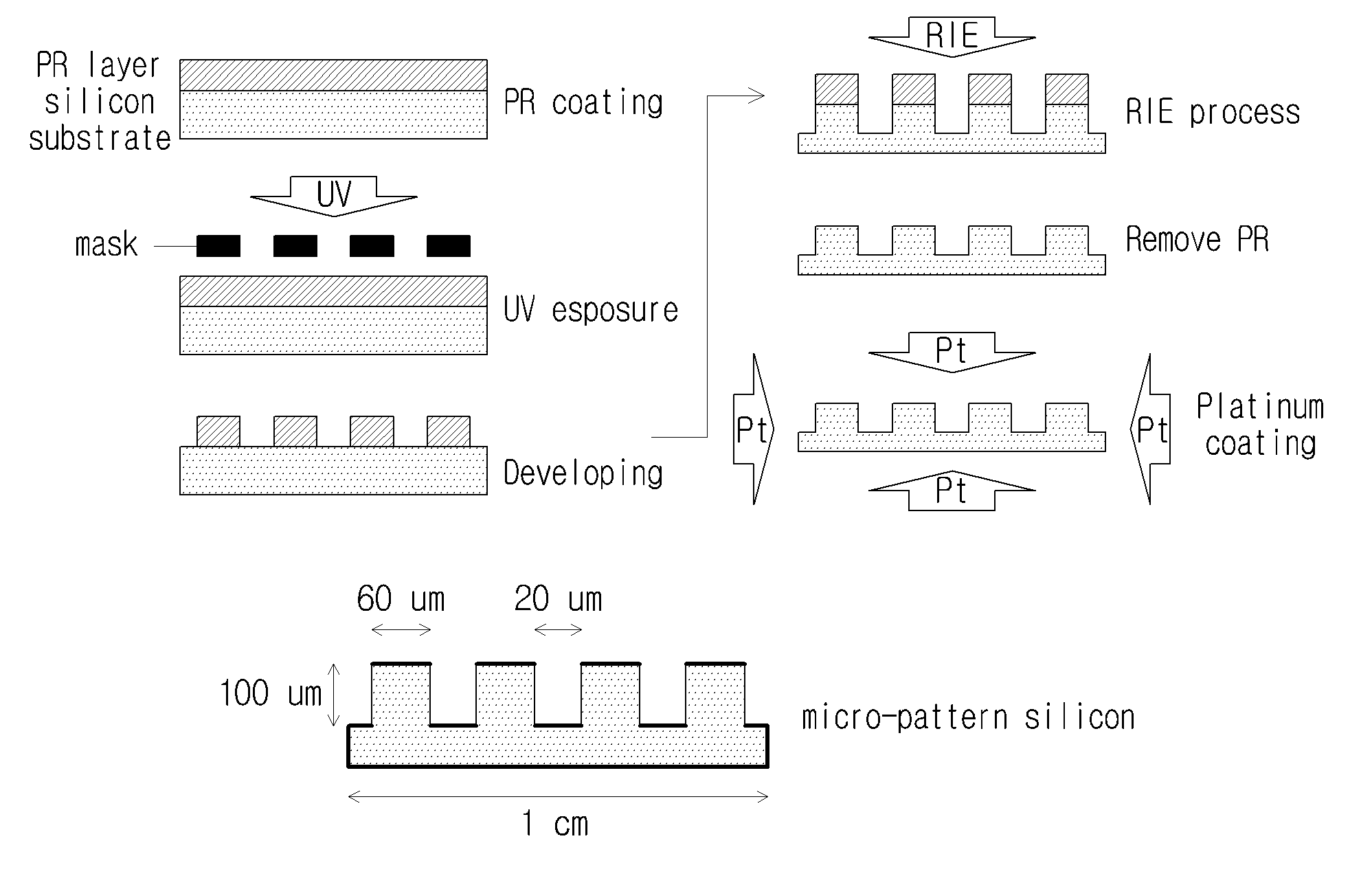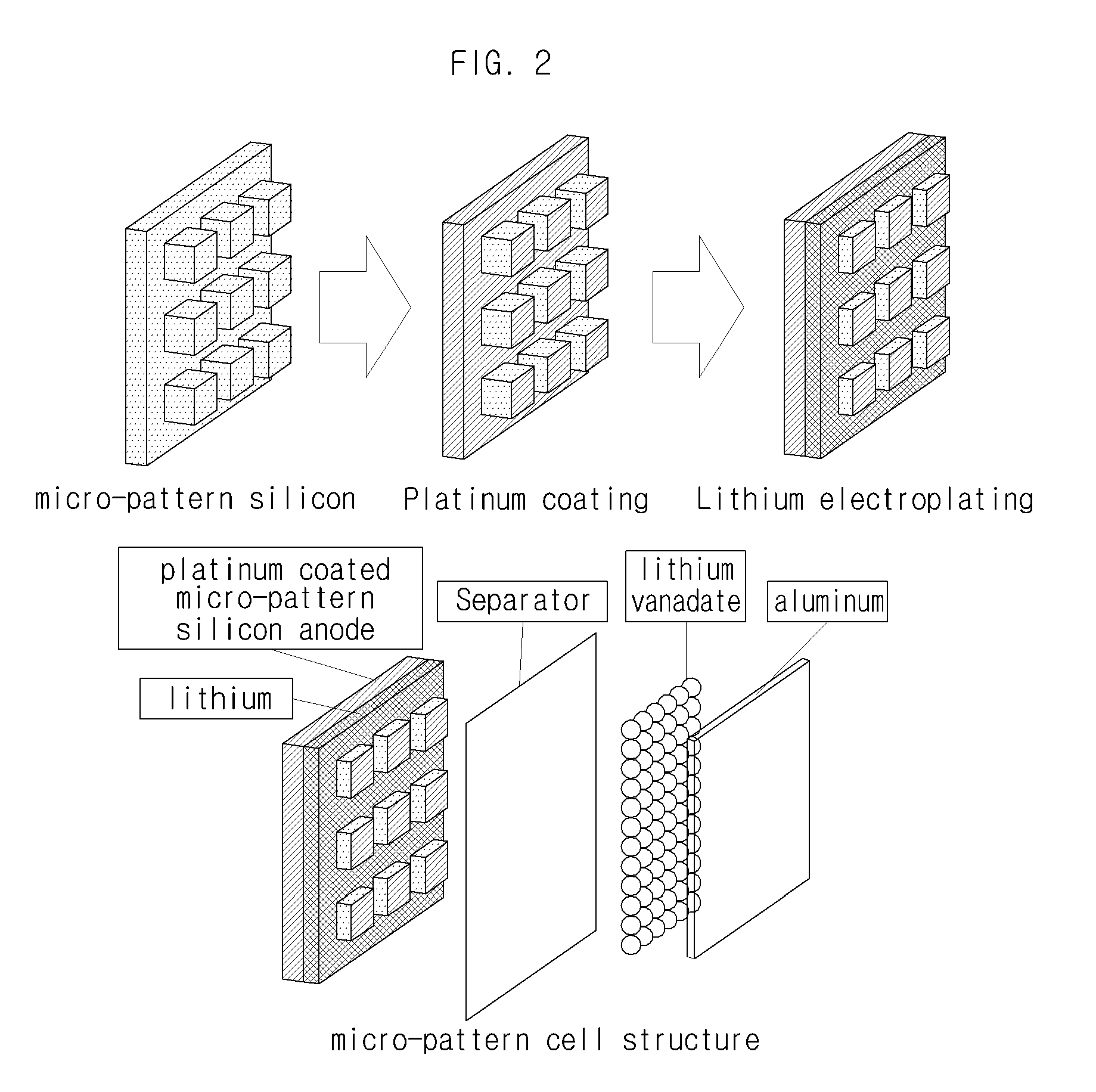Lithium Deposited Anode for a Lithium Second Battery and Its Manufacturing Method
- Summary
- Abstract
- Description
- Claims
- Application Information
AI Technical Summary
Benefits of technology
Problems solved by technology
Method used
Image
Examples
example 1
Preparation of a Lithium Deposited Anode
[0040]A positive photoresist (PR) was coated on the surface of a silicon substrate by employing a spin coating method. A photo-mask was closely placed to the surface of a silicon substrate and then it was exposed under UV. UV exposed PR was dissolved faster in a developing solution than UV unexposed PR. Micro patterns were formed on the surface of a silicon substrate, where the PR was coated, by reactive ion etching process. The remaining PR was then removed using a liquid resist stripping solution. The micro-size concave-convex patterns formed on the silicon substrate had 60 μm of width, 100 μm of depth and 20 μm of distance between convex portions. The concave-convex patterns-formed silicon substrate was cut in 1 cm2. Then platinum was coated on the micro-patterned surface of a silicon substrate by employing sputtering method and lithium was electroplated thereon. Here, even though platinum was coated over the entire surface of the silicon s...
example 2
Preparation of a Cathode
[0041]A cathode was prepared using slurry including 80 wt % lithium trivanadate (LiV3O8), denka black as a conductive material and 5 wt % polyvinylidene fluoride (PVDF) as a binder. All materials were dissolved in N-methyl-2-pyrrolidone (NMP) and casted in aluminum foil pieces. LVO was powder having 10 μm of an average particle diameter. The cathode was dried at 120° C. for 1 hour under vacuum. Amount of LVO powder was 3.9 mg and theoretical capacity of the LVO cathode was determined to be about 1.1 mAh.
example 3
Preparation of a Lithium Secondary Battery
[0042]A lithium secondary battery was prepared by using standard coin cell (CR2032) type. An electrolyte was a solution mixed in 1:1:1 volume ratio of ethylene carbonate (EC):dimethyl carbonate (DMC):ethyl methyl carbonate (EMC). Coin cell was prepared in a glove box charged with Ar gas. A micro-size concave-convex patterns-formed silicon anode / LVO cell is shown in FIG. 2.
PUM
 Login to View More
Login to View More Abstract
Description
Claims
Application Information
 Login to View More
Login to View More - R&D
- Intellectual Property
- Life Sciences
- Materials
- Tech Scout
- Unparalleled Data Quality
- Higher Quality Content
- 60% Fewer Hallucinations
Browse by: Latest US Patents, China's latest patents, Technical Efficacy Thesaurus, Application Domain, Technology Topic, Popular Technical Reports.
© 2025 PatSnap. All rights reserved.Legal|Privacy policy|Modern Slavery Act Transparency Statement|Sitemap|About US| Contact US: help@patsnap.com



